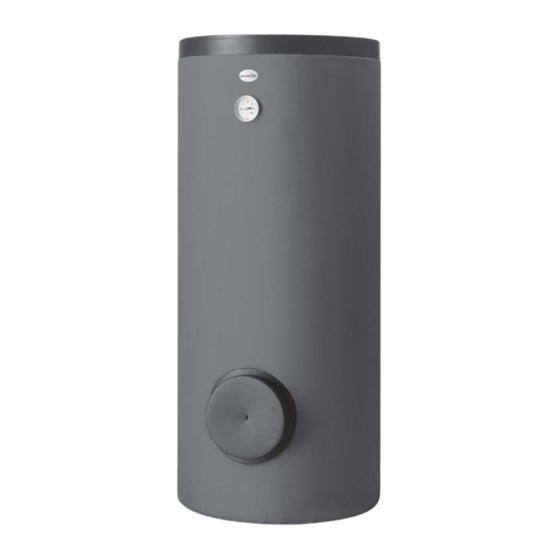
Advertisement
Advertisement
Table of Contents

Summary of Contents for Gorenje KGV 200-1
- Page 1 KGV 200 - 300...
-
Page 2: Technical Characteristics
The heater should be installed in a dry room that is not subject to freezing conditions, preferably in the vicinity of other sources of heating (e.g. boiler room). TECHNICAL CHARACTERISTICS KGV 200-1 KGV 300-1 KGV 300-2 KGV 200-1 KGV 300-1 KGV 300-2 1150 1550 1550 1010 1410... - Page 3 Thermometer Heater SH Heater R Type KGV 200-1 KGV 300-1 KGV 300-2 Volume Rated pressure [MPa ] Weight / Filled with water [kg] 82 / 282 112 / 397 134 / 414 Anti-corrosion protection of tank Enameled/Mg Anode HE heated surface - lowe...
- Page 4 CONNECTION TO THE WATER SUPPLY Before connecting the hot water tank, install the protective covering. Take off the top cover and insert the covering, make sure the slots on the covering match the connections on the hot water tank. Zip the zipper from top to bottom and tighten the tapes on the top edge of the covering.
- Page 5 CONNECTION TO ALTERNATIVE SOURCES OF HEATING The heaters enable the water for sanitary use to be heated by alternative sources of energy (e.g. central heating, solar power, …) by installing one or two heat exchangers. Additionally, a heating pump may also be fitted to the side flange of the tank. Options for connecting the water heater to various sources of heating are shown in the drawings below.
-
Page 6: Operation And Maintenance
OPERATION AND MAINTENANCE The water heater is ready for use once it has been connected to water and other sources of heating. The usual main sources of heating of water for sanitary use are central heating or solar power; in this case any regulation of water heating is performed in the heating system. Electric heater type R may be additionally installed on the flange 180mm, or electric heater type SH to the connecting bushing G 6/4, which are used for additional heating of water: - If you need higher temperature of water than assured by other heating sources,... - Page 7 Gorenje Tiki, d.o.o. SI-1521 Ljubljana Magistrova 1 06/2008 Slovenija 766383 Telefon: +386 1 5005 600 382 012 722 Fax: +386 1 5005 702...
















Need help?
Do you have a question about the KGV 200-1 and is the answer not in the manual?
Questions and answers